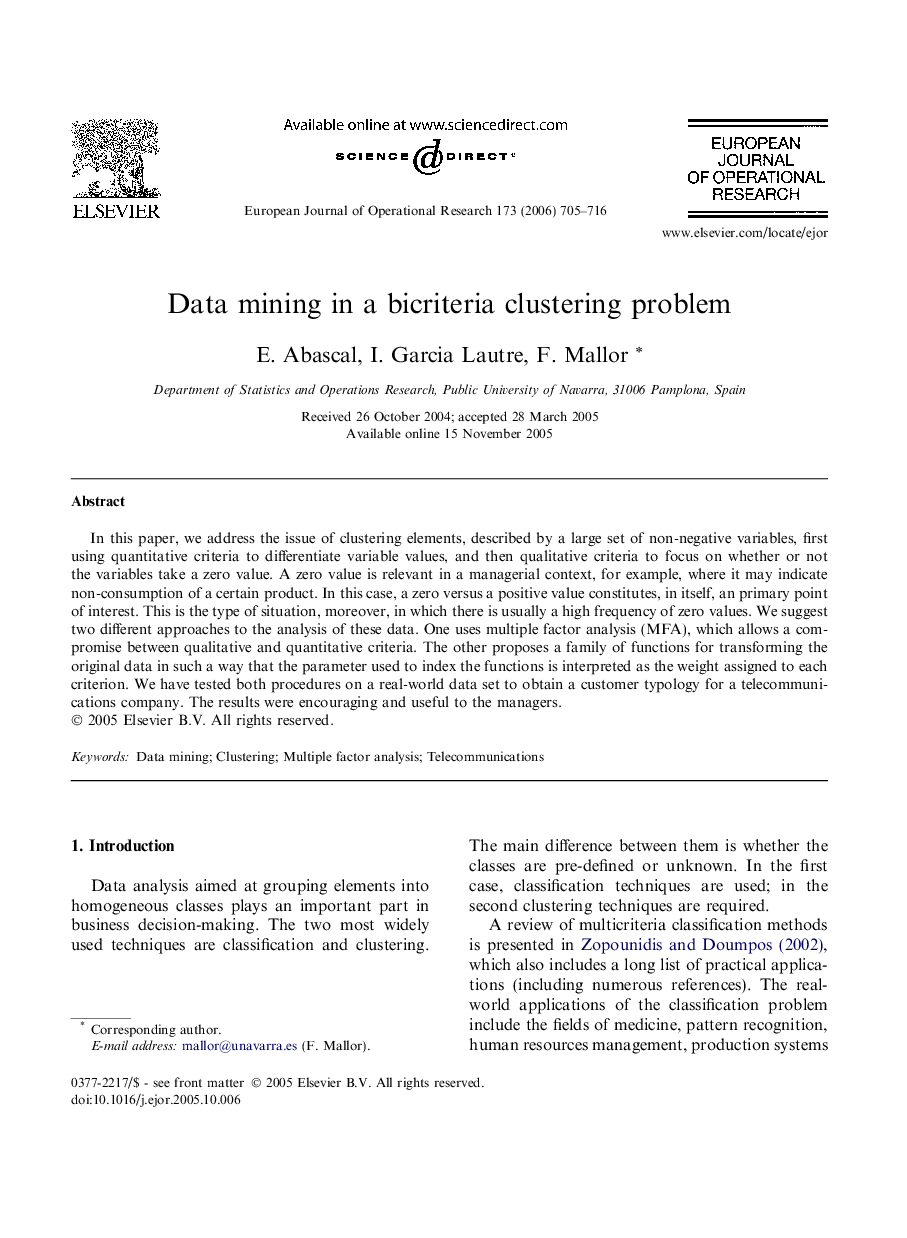| کد مقاله | کد نشریه | سال انتشار | مقاله انگلیسی | نسخه تمام متن |
|---|---|---|---|---|
| 482645 | 1446216 | 2006 | 12 صفحه PDF | دانلود رایگان |

In this paper, we address the issue of clustering elements, described by a large set of non-negative variables, first using quantitative criteria to differentiate variable values, and then qualitative criteria to focus on whether or not the variables take a zero value. A zero value is relevant in a managerial context, for example, where it may indicate non-consumption of a certain product. In this case, a zero versus a positive value constitutes, in itself, an primary point of interest. This is the type of situation, moreover, in which there is usually a high frequency of zero values. We suggest two different approaches to the analysis of these data. One uses multiple factor analysis (MFA), which allows a compromise between qualitative and quantitative criteria. The other proposes a family of functions for transforming the original data in such a way that the parameter used to index the functions is interpreted as the weight assigned to each criterion. We have tested both procedures on a real-world data set to obtain a customer typology for a telecommunications company. The results were encouraging and useful to the managers.
Journal: European Journal of Operational Research - Volume 173, Issue 3, 16 September 2006, Pages 705–716